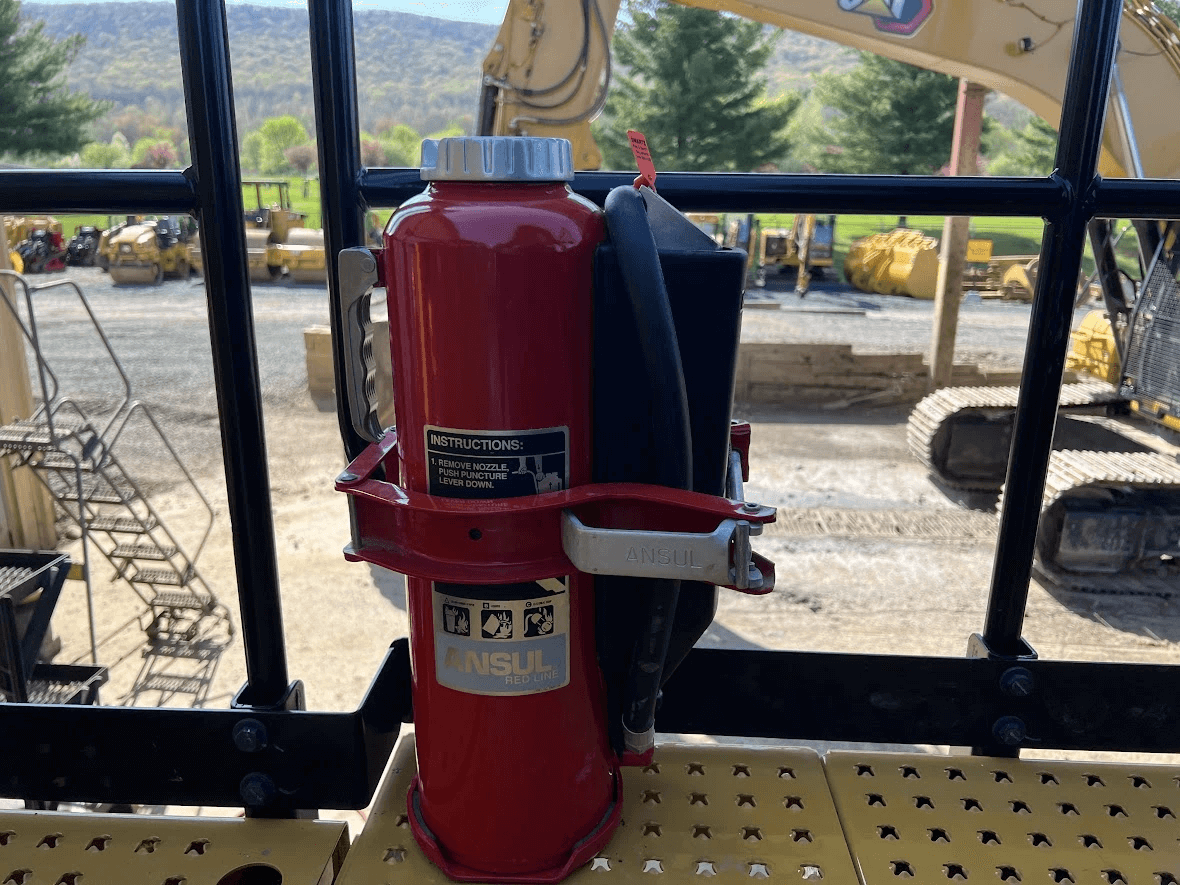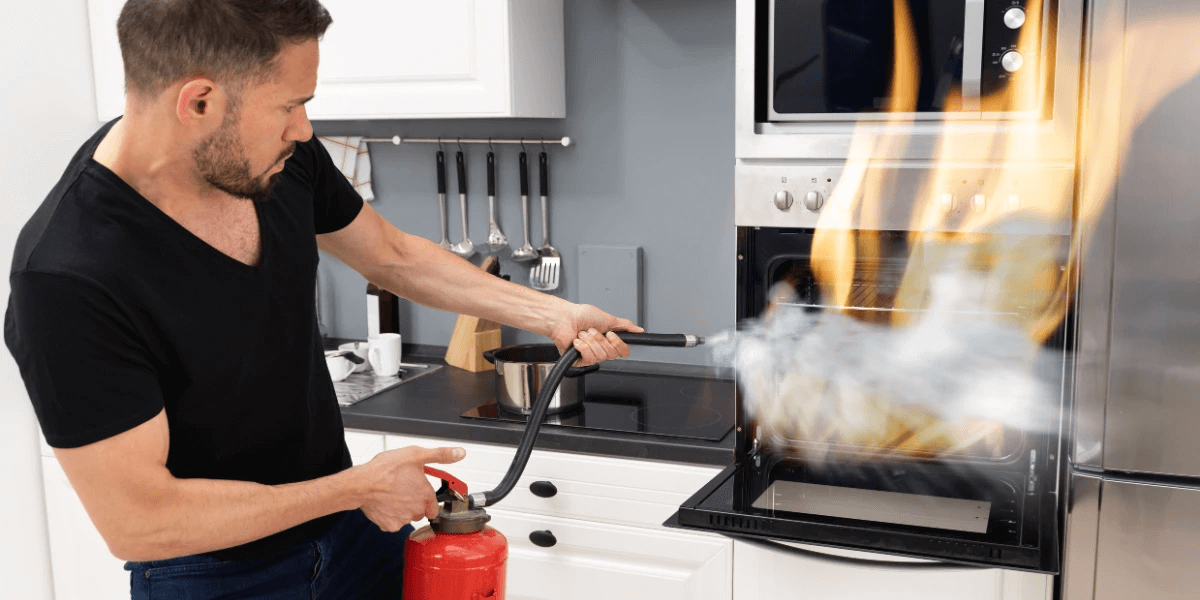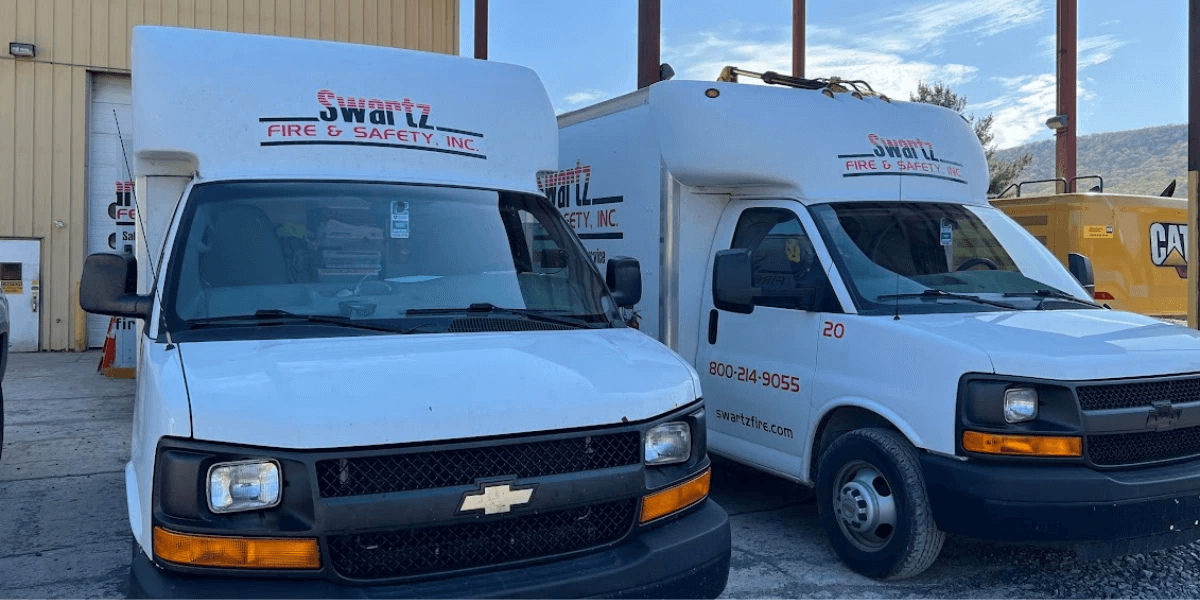What is Class D Fire Extinguisher? | State College, PA
You've probably seen different types of extinguishers around, but have you ever wondered why so many types exist? It's because not all fires are the same and tackling them with the wrong type of extinguisher could turn a small fire into a bigger disaster.
Since there are so many fire extinguisher types, let's focus on only one for this blog: the Class D fire extinguisher. This type of fire extinguisher is typically used to combat fires that break out from metal—yes, metals can catch fire, and when they do, it's no small affair.
What is Class D fire extinguisher, how do they work, and in what setting they will most benefit you? Let's talk a little more deeply about these because knowing your fire extinguishers can play a large part in keeping you and your property safe.
Key Takeaways
- Class D fire extinguishers are essential for safely handling fires involving combustible metals, highlighting the importance of matching the extinguisher type to the specific fire class.
- Understanding the characteristics of different fires and the appropriate extinguishing methods is crucial for effective fire safety and prevention.
- Consulting with fire safety experts ensures that environments are properly equipped with the right types of fire extinguishers, including Class D, to meet specific fire risks.
What Exactly Is the Class D Extinguisher?

We mentioned that Class D fires start from metal—combustible metals, to be exact. Unlike other fire extinguishers that might be used for general fire hazards, Class D extinguishers are equipped with a unique extinguishing agent that can safely smother and cool combustible metal fires involving magnesium, titanium, and sodium, to name a few.
These extinguishers are crucial in metalwork settings, such as welding or machining.
And what are Class D fires?
Class D fires break out from flammable metals. Combustible metals might seem innocuous in everyday use, but they can ignite under certain conditions, leading to fires that burn at extremely high temperatures and react violently to common extinguishing methods like water.
The challenge with Class D fires lies not just in their high heat but in their reactive nature. When certain metals burn, they can create chemical reactions that exacerbate the fire or produce toxic fumes, posing significant risks to safety and making them difficult to extinguish with traditional methods.
How Class D Fire Extinguishers Fight Fires
We have mentioned Class D fires don't react well to water. You can't simply throw a glass of liquid onto one to extinguish the flames like you can with ordinary combustibles (paper, wood, etc). But here lies the genius of these extinguishers made specifically to fight them:
Unlike standard fire extinguishers that utilize water, foam, or carbon dioxide, Class D models employ specialized extinguishing agents.
These extinguishers are designed to tackle the intense heat and reactivity of metal fires by deploying dry powder formulations that isolate the fuel source from oxygen, effectively stopping the chemical reaction that fuels the fire.
The extinguishing agents used in Class D fire extinguishers include sodium chloride, graphite, and other dry powder formulations. These agents are chosen for their ability to cover and cool the burning metal, depriving it of the oxygen needed to sustain the fire.
Moreover, the delivery mechanism of Class D extinguishers is specially designed to softly dispense the powder, ensuring it blankets the fire gently without causing the metal to scatter, which could potentially spread the fire.
When and Where Are Class D Extinguishers Essential?
Class D fire extinguishers are indispensable tools in various settings where combustible metals are used, stored, or processed. While almost all places are at risk from metal fires, some environments are at especially significant risk for the kind of fires that standard extinguishers can't handle.
Here’s a rundown of places where keeping a Class D extinguisher on hand isn't just good practice—it's essential for safety and compliance:
- Manufacturing facilities: Especially those that work with metals like magnesium, titanium, and aluminum. These locations often involve processes that produce fine metal shavings or dust, which can easily ignite.
- Laboratories: Research and industrial labs that use or test combustible metals require these extinguishers to manage any fire risks associated with their experiments or processes.
- Metal machining shops: Places where metal grinding, cutting, and shaping happen are prime sites for Class D fires due to the generation of combustible metal particles.
- Aerospace industries: The use of lightweight, combustible metals like magnesium and titanium in parts manufacturing puts these facilities at risk.
- Automotive manufacturing: Especially in departments dealing with the machining of engine parts that might involve combustible metals.
- Recycling facilities: Where combustible metals are processed and handled, increasing the risk of fire incidents.
- Fireworks manufacturers: The use of metals like magnesium in fireworks production can lead to Class D fires during manufacturing or storage.
- Schools and universities: Educational workshops and laboratories that engage in metalworking or chemical experiments involving combustible metals.
Choosing the Right Fire Extinguisher

Now that you know a little about Class D fires and what to use on them, how about the other fires? You should know something about them too because selecting the right fire extinguisher means understanding the specific hazards in your environment and ensuring you're prepared to tackle them effectively.
With a range of fire classes—from class A fires to class K—choosing the right extinguisher is crucial for safety and efficiency. Here’s how you can make sure your choice is the right one:
Assess your environment
Look around your workplace, home, or facility. What materials are present that could ignite?
Understand fire classes
Familiarize yourself with the different classes of fires.
- Class A fires involve ordinary combustible materials like wood and paper.
- Class B fires involve flammable liquids, such oil-based paints.
- Class C fires are electrical fires, or those that break out from electrical equipment.
- Class D covers fires involving metals like magnesium, sodium, or potassium.
- Class K (or F) fires involve cooking oils and grease.
Knowing the fire classes helps in choosing the extinguisher tailored to combat those specific fires. In the case of class A, B, and C fires, you can also look for the ABC fire extinguisher to put them out, as it is designed to target all three types.
Consult experts
Fire safety isn't a one-size-fits-all solution. Consulting with fire safety experts can provide insights into the specific types of fire extinguishers your facility needs.
Experts can assess your environment's unique risks and recommend the appropriate extinguishers, including whether Class D extinguishers are necessary for your setting.
Training and accessibility
Having the right extinguisher is just the first step. Ensure that staff or household members know how to use the extinguishers effectively. Regular training sessions can save lives and property.
Additionally, place extinguishers in accessible locations, clearly marked, and away from potential fire hazards but close enough for quick retrieval.
Enhance Your Fire Safety Preparedness

When it comes to safeguarding your environment from fires, especially those involving combustible metals, Swartz Fire & Safety is your go-to expert.
Our team is dedicated to providing you with the right fire safety solutions tailored to your specific needs. With our comprehensive range of fire extinguishers, we're here to ensure you're prepared for any fire emergency.
Don't leave your fire safety to chance! Contact us today for a no-obligation consultation about our products and services and let us help you make your space safer for everyone.
Our experts are ready to assist you in selecting the appropriate fire extinguishers, offering training on their use, and ensuring your fire safety measures are up-to-date and effective. Take the next step towards comprehensive fire safety with Swartz Fire & Safety.
Frequently Asked Questions
What extinguisher is used for Class D fire?
Class D fire extinguishers are used for fires involving combustible metals. These extinguishers typically use dry powder formulations like sodium chloride or graphite to smother the fire.
What does D mean on a fire extinguisher?
The "D" on a fire extinguisher indicates that it is designed for use on Class D fires, which involve combustible metals. These extinguishers are specialized to handle the unique characteristics of metal fires.
What are the Class D fires?
Class D fires involve metals that combust. These metals can ignite and burn at high temperatures, requiring specific extinguishing methods.
What is a Class D fire extinguisher intended for use on?
A Class D fire extinguisher is intended for use on fires involving combustible metals. It is specifically formulated to safely smother and cool the fire, preventing re-ignition and spreading.


